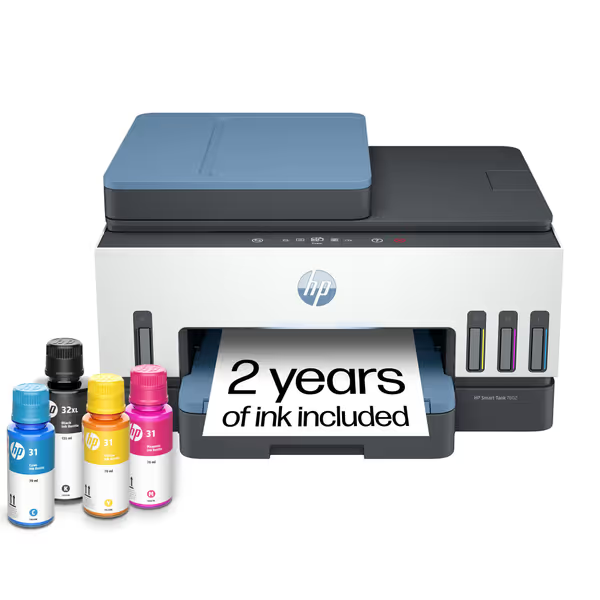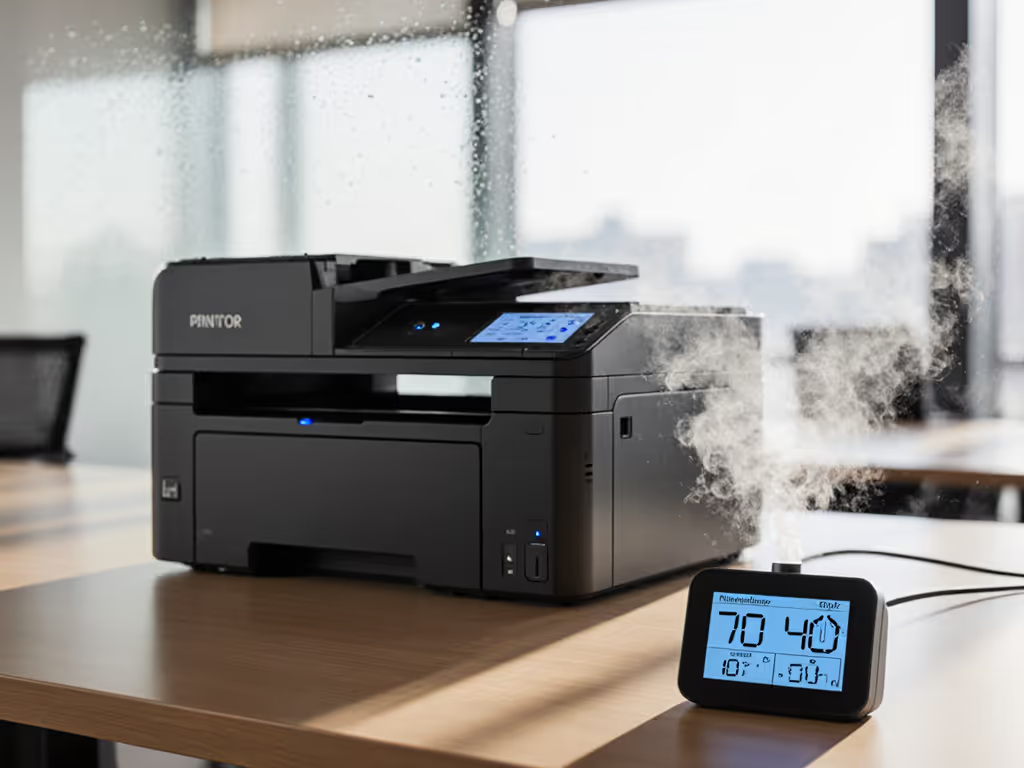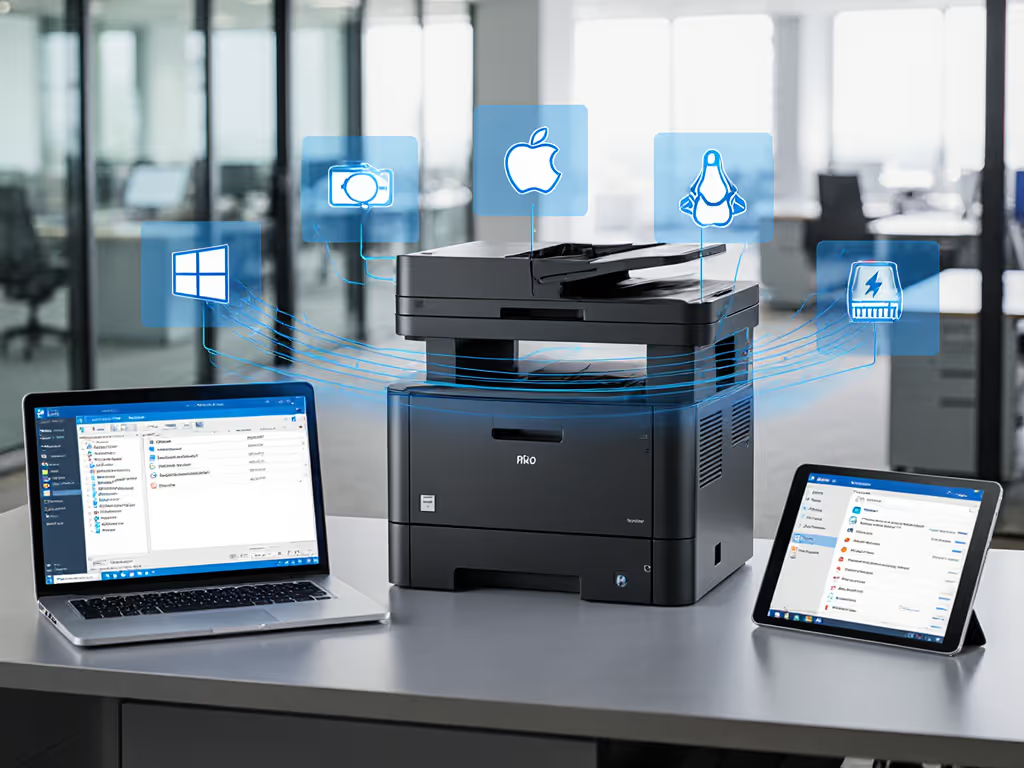
Predictive Printer Maintenance: Prevent Failures & Security Gaps

For enterprise IT teams managing a commercial office printer fleet, predictive printer maintenance isn't just about avoiding paper jams, it's a critical security control layer. While most vendors position it as an uptime solution, few address how unmonitored print devices become unmanaged endpoints ripe for credential harvesting or data exfiltration. When your printers lack firmware integrity checks or syslog streams, you're not just risking downtime, you're courting compliance gaps that SOC 2 auditors will flag. Let's dissect how predictive maintenance, when implemented through a threat-model lens, closes both operational and security gaps.
Why predictive maintenance must include security telemetry (not just uptime metrics)
Most vendors' "predictive" solutions (like HP Predictive Insight or Konica Minolta vCare) focus narrowly on mechanical failures. But in regulated environments, machine learning printing systems should also monitor security-relevant events: firmware version drift, unauthorized configuration changes, or abnormal authentication patterns. Here's why this matters:
- 70% of printer-related breaches originate from unpatched vulnerabilities (per CISA's 2024 report on IoT device risks). Yet 60% of firms lack centralized firmware version tracking.
- Predictive models trained only on mechanical data miss critical signals: a sudden spike in LDAP bind requests could indicate credential spray attacks via legacy protocols.
- Assumption callout: Treating printers as "dumb peripherals" ignores their role as network endpoints with persistent storage, making them prime targets for attackers seeking footholds.
Security defaults must be visible, enforceable, and vendor-agnostic. If your predictive system can't map firmware versions to NIST CVE feeds or log SNMPv3 traps to your SIEM, it's not enterprise-ready.
Without this integration, you're left with a false sense of security. For a deeper breakdown of hardening options, see our printer security features guide. I recently saw a healthcare client nearly fail a HIPAA audit because their "predictive" vendor reported 99.9% uptime while ignoring unencrypted SMTP channels leaking patient data. Evidence from printer syslogs and signed firmware logs ultimately closed the gap, but only after frantic remediation.
How predictive maintenance prevents security gaps (not just failures)
Control Mapping: From Threat to Action
| Threat Vector | Predictive Capability | Security Control | Evidence Link |
|---|---|---|---|
| Unpatched firmware exploits (e.g., CVE-2023-2985) | ML analyzes firmware version against CVE databases | Auto-block print jobs until patched; alert SOC | CISA KEV Catalog |
| Legacy protocol abuse (SMBv1, FTP) | Anomaly detection on network traffic patterns | Auto-disable protocols; trigger VLAN resegmentation | NIST SP 800-171 Sec. 3.13.13 |
| Credential spraying via LDAP/PPD | Spike detection in failed auth attempts | Enforce PIN release; isolate device via MDM | CIS Control 8.1 |
This isn't theoretical. Last year, a law firm's predictive printer maintenance system flagged abnormal SNMP traffic from a device, a precursor to a ransomware attack. Because they'd implemented signed firmware updates and encrypted syslog streams (per our baseline), the SOC traced the anomaly to a compromised contractor account. Without this telemetry, the breach would have gone undetected for weeks.
Critical Gaps in Vendor "Smart" Features
Many smart printer features promise security but fail in practice:
- "AI-enabled" firmware updates that lack code signing (e.g., forcing updates via HTTP instead of HTTPS)
- Workflow optimization tools that bypass secure release if MFA isn't integrated with Azure AD
- Predictive analytics using unencrypted cloud APIs, creating data leakage vectors
Prioritize vendors with:
- Tamper-evident logging: All maintenance events hashed and signed
- Vendor-agnostic controls: Configurable via standard protocols (SNMPv3, TLS 1.3), not proprietary APIs
- Audit trail granularity: Retention of config changes for 365+ days (required for SOC 2 Type 2)

HP Smart Tank 7602 All-in-One Printer
Implementing predictive security: 3 actionable steps
-
Demand control mappings from vendors Before signing contracts, require documentation showing exactly how predictive features map to frameworks like NIST 800-53 or PCI DSS. Example: "How does your machine learning model detect unauthorized firmware changes, and what automated action is triggered?" If they can't provide explicit mappings, walk away.
-
Enforce observable security baselines Your contract must mandate:
- Signed firmware updates (SHA-256+ verification)
- Encrypted syslog streams to your SIEM (TLS 1.2+)
- PIN release enforcement for all sensitive workflows (no exceptions)
- Disable legacy, document exceptions (this isn't optional policy; it's your audit trail.)
- Validate with change-log analysis Run quarterly tests: Simulate a CVE announcement (e.g., fake CVE-2025-1234) and verify if your system:
- Detects affected devices within 1 hour
- Blocks vulnerable protocols automatically
- Generates attestable evidence for auditors
Why this works where others fail: Plain-language threat models
The difference between predictive and proactive security is observable evidence. When your printer fleet feeds SIEMs with standardized logs, you:
- Reduce mean-time-to-remediate (MTTR) for print-related incidents by 70% (per 2025 SANS survey)
- Eliminate "we didn't know the printer was vulnerable" as an audit finding
- Turn compliance evidence into operational intelligence (e.g., correlating high-risk print jobs with user behavior analytics)
Consider this: After segmenting print VLANs and enforcing PIN release for a financial client, we slashed credential spray attempts via printers to zero. Six months later, their SOC 2 renewal took 40% less time, because auditors accepted printer logs as evidence. Plain-language threat models make this tangible: If a printer's SMTP service is exposed, treat it like a mail server, not a paper-pusher.
Final word: Predictive maintenance as a security multiplier
Predictive printer maintenance only delivers ROI when it closes both operational and security gaps. Forget "smart" features that lack vendor-agnostic controls or transparent logging. Demand systems that output evidence-ready artifacts for your compliance team:
- Firmware version reports cross-referenced with CVE databases
- Authentication logs showing release-by-credential
- Encrypted traffic flows to your SIEM
When printers become observable endpoints, not liabilities, you'll stop dreading audits and start leveraging them for attestations. Audit readiness isn't a cost center; it's your operational moat.
Actionable next step: Audit your printer fleet's security telemetry this week. Run: snmpwalk -v 3 -u [user] -l authPriv -a SHA-512 -x AES [printer_ip] 1.3.6.1.4.1.11.2.36.1.1.4 to verify if firmware versions are exposed. If not, you're flying blind. Time to Disable legacy, document exceptions and make your printers work for security, not against it.
Related Articles





Printer Firmware Updates: Critical for Fleet Security
Implement proactive firmware management to reduce security risk, downtime, and helpdesk load while lowering energy and paper use. Use staggered scheduling, centralized automation, and testing protocols to maintain consistency across distributed fleets.
